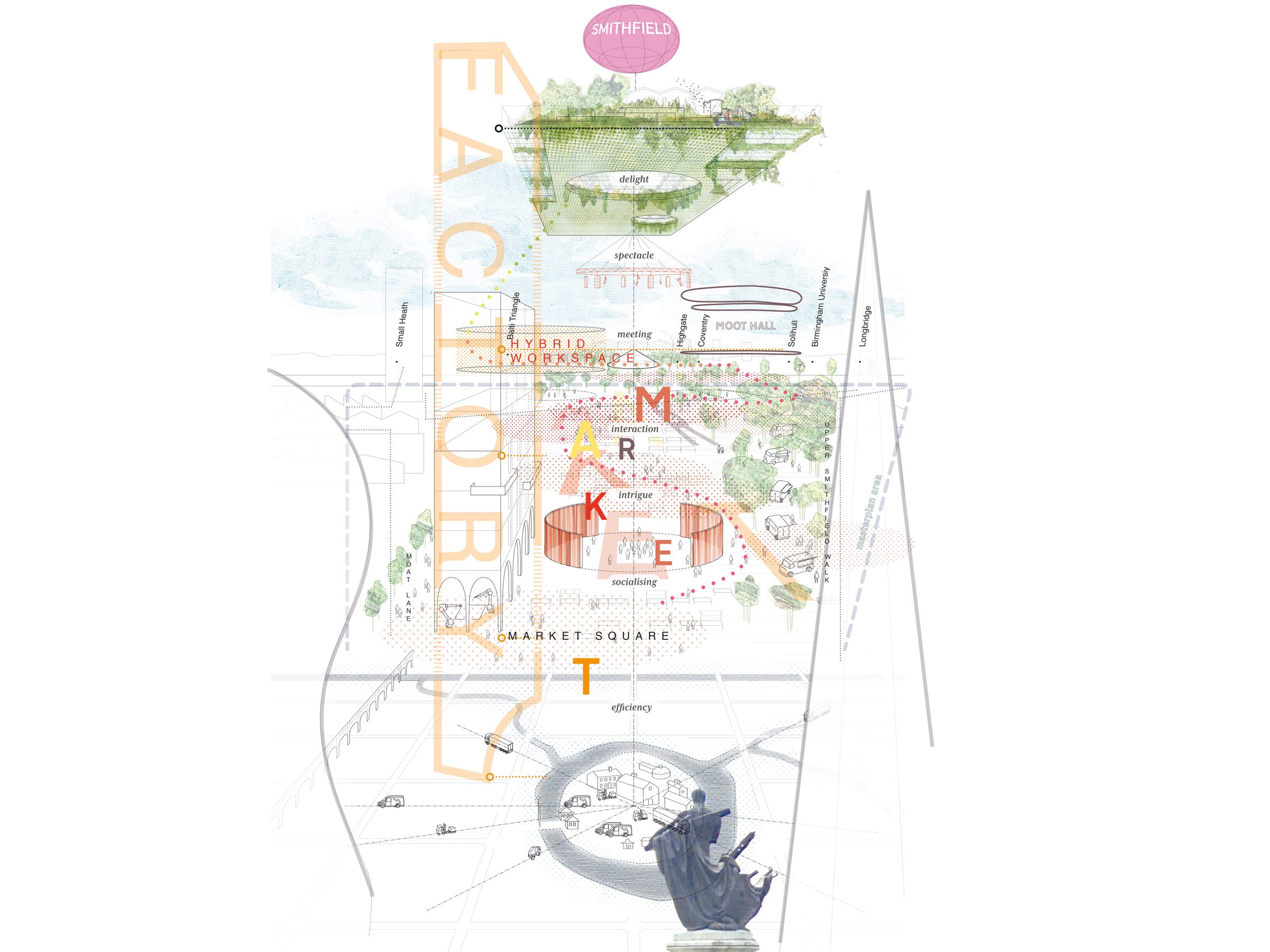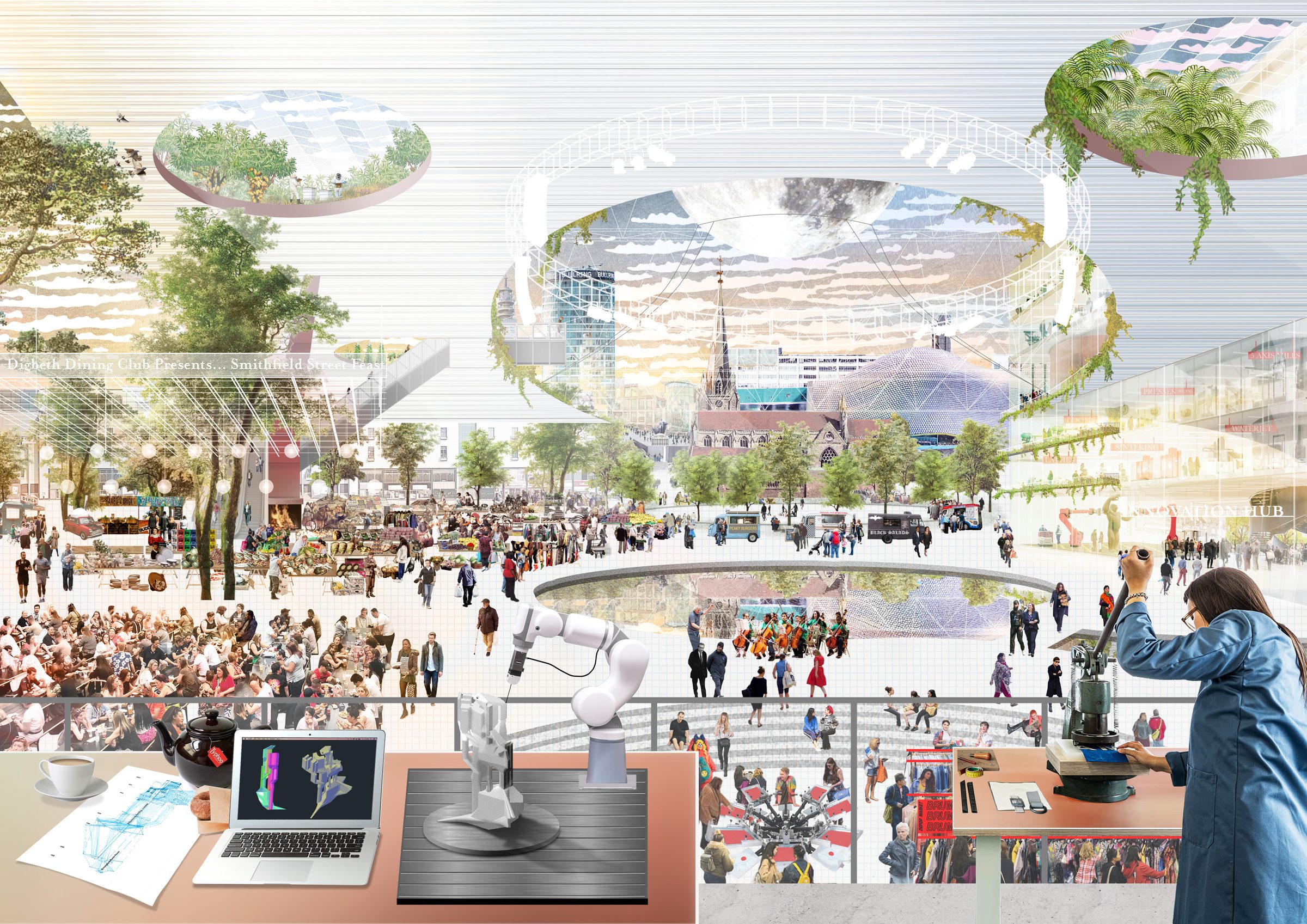Smithfield is the location where both the City of Birmingham and its famous market were born and the fortunes of market and city are inextricably linked and dynamic. Our shortlisted submission for the competition explored the potential of this dynamic to inform a 21st century market.
Birmingham avoided the worst of the urban epidemics of the nineteenth century through inventive political & social reform, manifest in the physical improvement of the city. When the Street Commissioners (the forerunners of the City Council) began their work of urban renovation, imagine their delight on finding a rare ‘clearing’ right in the heart of the city. This open estate at Smithfield was the moated manor house of the de Birmingham family, granted the right to hold the original market in the 12th century.
With poetic justice, the Commissioners acquired this estate to provide the space to reform and regulate the city’s market, clearing animals from the streets, simultaneously confronting disease and improving trade: that quintessentially Brum dialectic.








